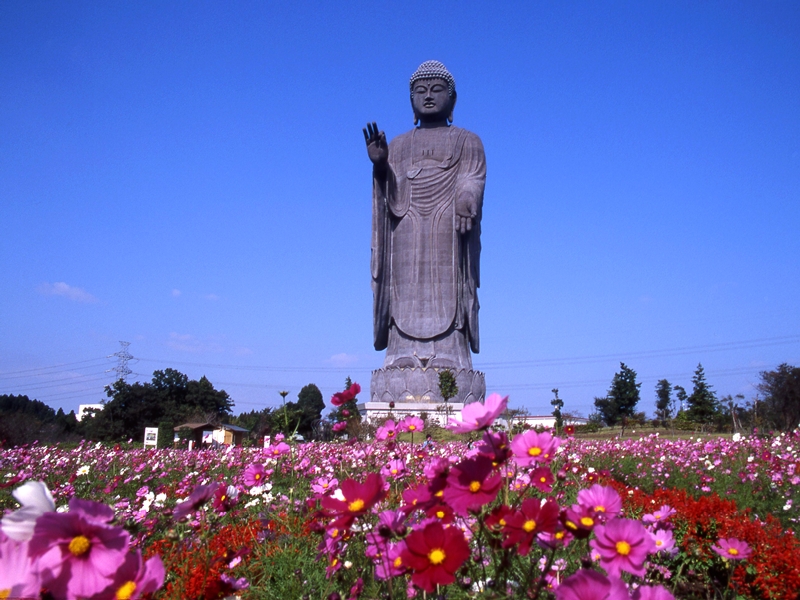While many people hate on Saitama and give it nicknames like dasaitama (a play on the word dasai, or uncool) and Chiba seems to get away with being included under the Tokyo umbrella — it’s home to Tokyo Disneyland and the “Tokyo” airport Narita, for example – Ibaraki tends to suffer from middle child syndrome and is ignored completely. In Japan, it was voted the “least appealing” out of all 47 prefectures by media outlets nationwide 7 years running, finally moving up to the 42nd spot in 2020.
But is the low ranking justified? Ibaraki is the third-largest agricultural producer in Japan (fruits and vegetables), after Hokkaido and Kagoshima, making it vital to Japan’s quality cuisine. It also houses cutting edge science research facilities in Tsukuba, and was a critical hub for the Tokugawa clan during the Edo period. On top of that, it has all the best natural scenery — flower fields, ocean vistas, high mountains and deep forests – and much, much more. For an overview of some of the exciting destinations Ibaraki has to offer, read on.
NORTH IBARAKI
The northern part of Ibaraki Prefecture borders Fukushima Prefecture and offers a stunning array of beaches and seaside facilities.
Kita-Ibaraki
Picture sleepy seaside towns with an abundance of hot springs facing the Pacific Ocean, add a touch of art history and you have Kita-Ibaraki.
Visit: Izura Rokkaku-do
Head to the craggy coastline of Izura in Kita-Ibaraki to find Rokkaku-do, a vermillion hexagonal pavilion that sits on a peninsula jutting out into the sea. The pavilion and its surrounding gardens were the brainchildren of Tenshin Okakura, a Meiji period modernizer and patron of the arts. He revolutionized modern Japanese painting and is credited with getting the Nihonga style internationally recognized. Take time to stroll the peaceful gardens and take in the ocean view. Head to The Tenshin Memorial Museum of Art, Ibaraki nearby to learn about the Nihonga art movement and Okakura’s involvement in it.
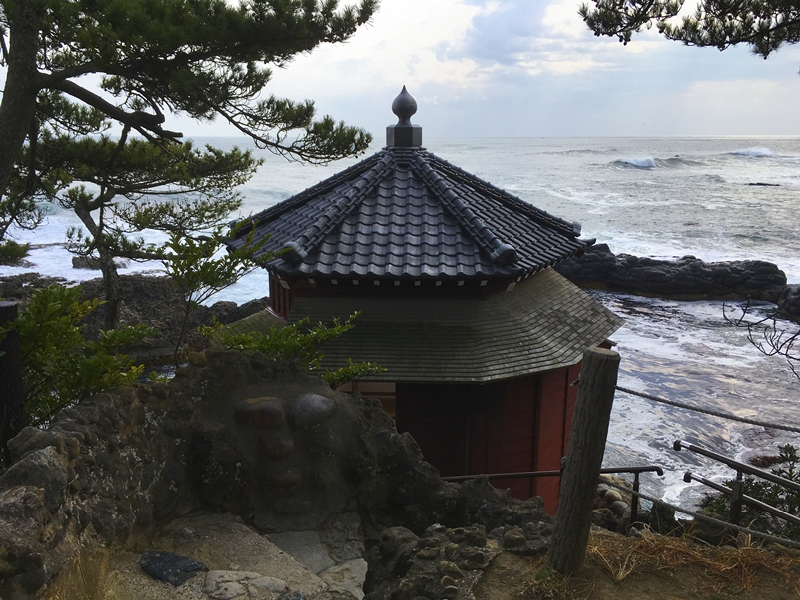
Stay: Isohara Seaside Hotel
Ever wanted to fall asleep to the soothing sounds of waves crashing against the shore? At Isohara Seaside Hotel, every room faces the Pacific Ocean, making that dream a possibility. Take a dip in the rooftop open-air bath to make the most of the view of the ocean — if you’re lucky, you’ll be able to catch the rising sun while you grab a soak. For dinner, dine on ankou nabe — monkfish hot pot — a seasonal specialty in the area, only available from November to March. The breakfast buffet offers a wide range of dishes, including a selection of natto sides — another Ibaraki specialty for those who can stomach it.
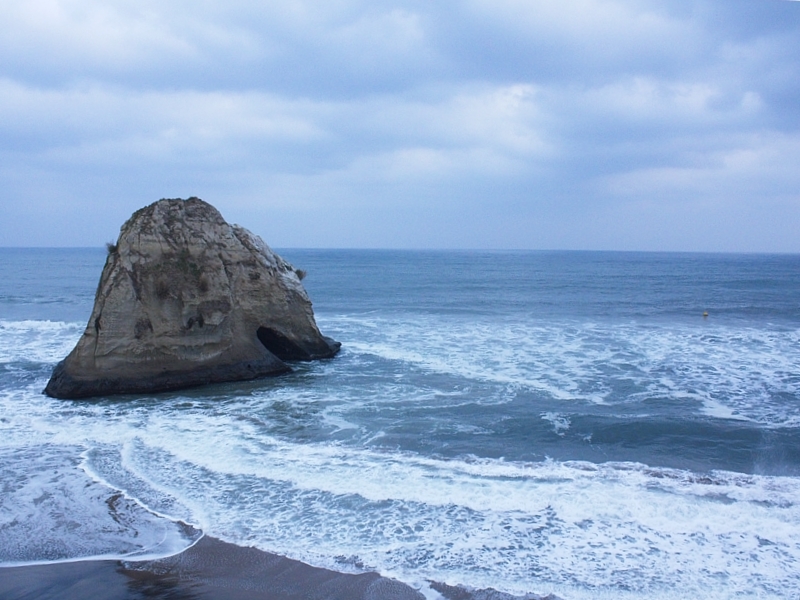
Hitachi City
A bustling city on Ibaraki’s northeast coast, Hitachi boasts both beaches and great hiking trails in the mountains.
Visit: Hitachi Station
Surprisingly, Hitachi Station is a destination in itself. The building, which seamlessly blending into the environment around it, won a Good Design Award in 2012. Stop by the Seabirds Café inside for delicious pancakes and a front row view of the ocean.
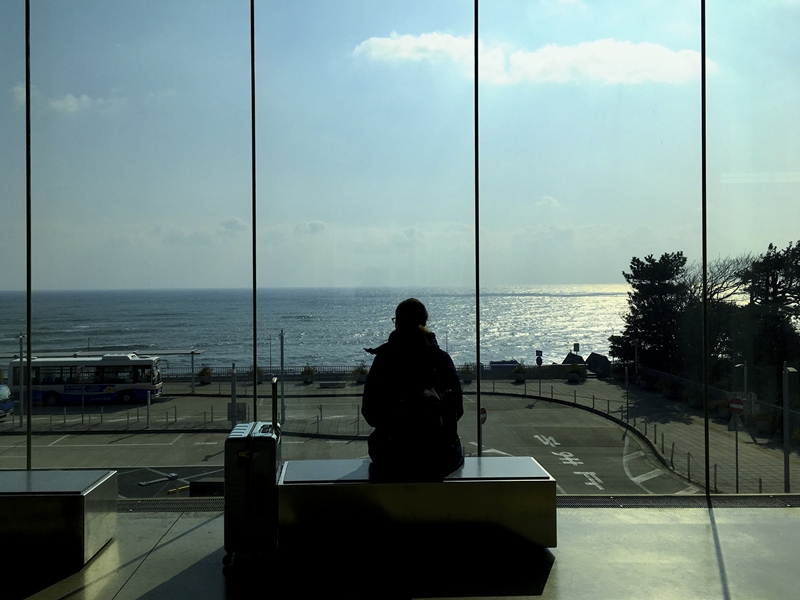
Visit: Oiwa Shrine
One of Japan’s most talked about power spots, Oiwa Shrine garnered national attention after JAXA astronaut Chiaki Mukai said she should see a light shining from earth while she was in space. When she looked into it, this mysterious spot was in the middle of the Hitachi forests, right where Oiwa Shrine lies. Whether Oiwa Shrine is visible from space or not, it is a one-of-a-kind place. All 188 Shinto gods are deified here, meaning that there is literally a god for every ailment or wish you may have. The grounds spread deep into the cedar forests and there is even a hiking trail that allows you to explore smaller shrines and pre-Meiji Era Buddhist artifacts.

Activity & Stay: Oku-Hitachi Kirara no Sato
A short drive from Oiwa Shrine lies Oku-Hitachi Kirara no Sato, a recreational facility that has everything for the perfect family getaway: a restaurant, an herb garden, cabins for overnight stays, a barbecue area and more. It is also home to the longest slide in Japan, which boasts 877 of breakneck speeds of up to 30km/hr on winding curves, with a leisurely climb of 311 meters back to the top. Tickets are sold individually or in sets of three — you’ll be guaranteed to want the set. If you’re lucky, you can also spot Mount Fuji and Nikko’s mountain ranges on a clear day.
Hitachi-Ota
Hitachi-Ota lies in the central northern area of Ibaraki and is a great place for nature lovers and adventurers with its many mountain trails and geopark.
Activity: Ryujin Suspension Bridge
For an even bigger thrill than Japan’s longest slide, adrenalin junkies can get their fill by jumping off the Ryujin Suspension Bridge — attached to a bungee rope, of course. Ryujin Bungy allows thrill seekers to dive 100 meters down towards the dragon-shaped Ryujin Gorge, which boasts a particularly stunning view in autumn. Visitors not into life-threatening activities can shop souvenirs, or, if well prepared, head to the hiking trails on the other side of the bridge. There’s also a café at the bottom of the ravine, and plenty of other activities like SUP, kayaking and more.
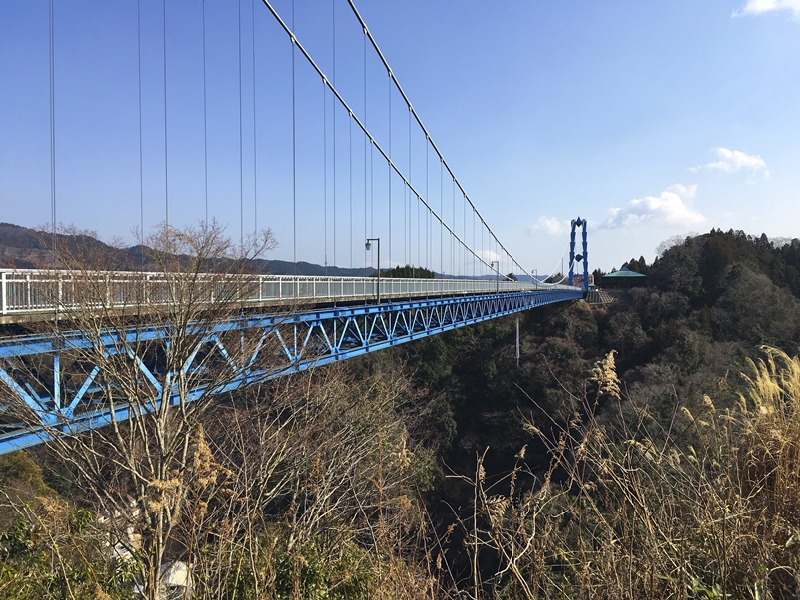
Dine: Izumiya Honten
First opened in 1934, Izumiya is a traditional udon shop that stands out in a prefecture most famous for soba. Niku-udon is a particular specialty of the place, featuring generous helpings of beef together with its extra thick noodles. The Akiyama Special is unique to Izumiya and is named for a customer that requested this particular recipe. This udon dish is full to the brim with toppings, including Chinese chives, tenkasu (deep-fried flour batter) and more.
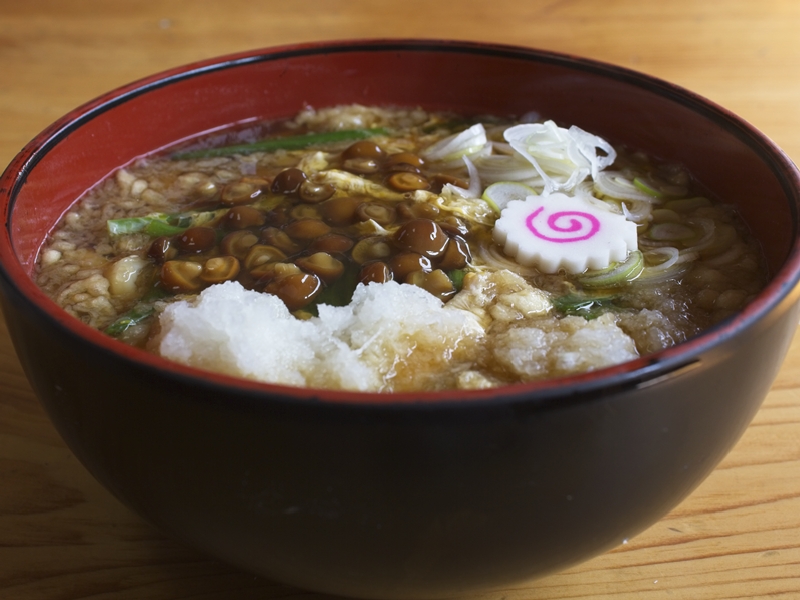
Naka
Naka lies just north of Hitachi-Ota and is home to one of Japan’s most famous beer brands, Hitachino Nest Beer.
Activity, Dine & Visit: Kiuchi Brewery, Inc.
Kiuchi Brewery was originally founded in 1823 and for most of its existence has manufactured sake, umeshu and even shochu. When the Japanese government loosened its alcohol tax laws in 1994, Kiuchi Brewery made the most of this opportunity and started brewing its own beer, Hitachino Nest, in 1996. Since then, Hitachino Nest’s many varieties have won multiple awards, both home and abroad. To taste some of the brewery’s best onsite, head to the Kiuchi’s headquarters in Naka, Ibaraki. Here you can not only enjoy an extensive selection of spirits and beers but also dine on handmade soba at the rustic restaurant on the property. You can also, with advance reservations, brew your very own beer. Mix together the ingredients yourself to find your unique flavor as you gain insight into beer brewing on a larger scale. The process only takes a few hours, but since the brew needs time to ferment, bottles are shipped* approximately a month later.
*Shipping only available within Japan.
At the time of writing, sake and beer brewery tours for individuals are not currently available.
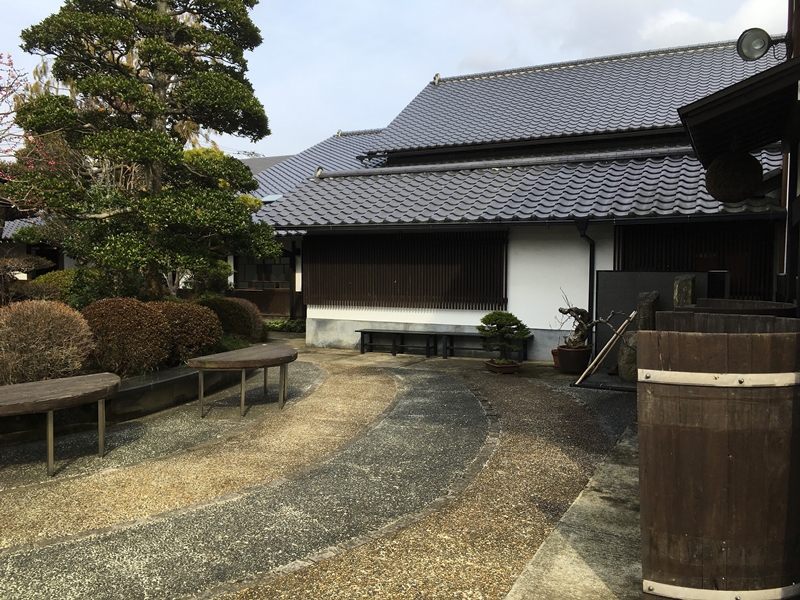
Daigo
Known for its hot springs, apples and waterfalls, Daigo is a small town, but with a lot to offer.
Visit: Fukuroda Falls
Most famous of all of Daigo’s sights is Fukuroda Falls, a massive waterfall scaling 120 meters high and 73 meters wide. Its beauty has been written about for centuries, and famous Buddhist monk and poet Saigyo (1118-1190) stated that to truly appreciate Fukuroda Falls, one must see it every season, as its character changes dramatically. The small town around the falls has an easy and charming vibe and is filled with small eateries and souvenir shops. There is also a hiking trail up towards the top of the waterfall for the adventurous. Be sure to grab a freshly baked piece of apple pie while here — the apples are supposed to be the best in the prefecture.
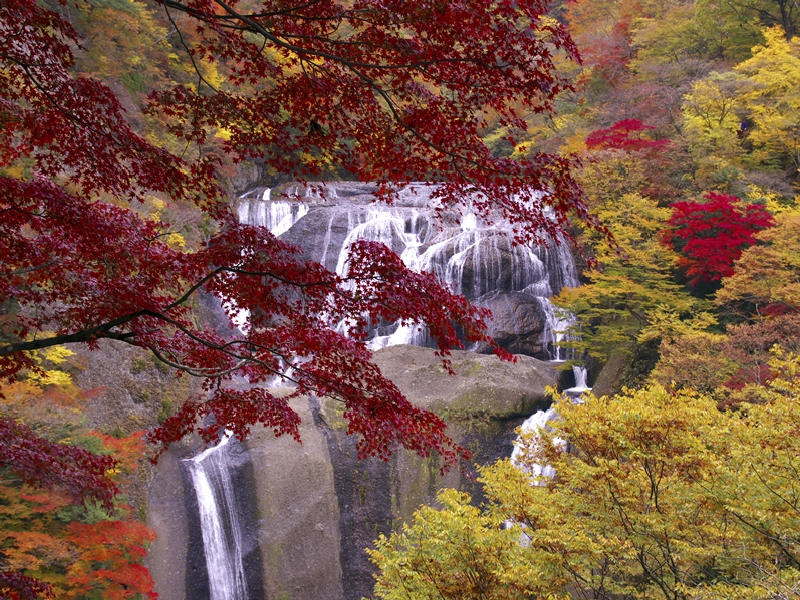
Courtesy of Ibaraki Prefecture Tourism and Local Products Association
CENTRAL IBARAKI
Mito
The capital of Ibaraki Prefecture, Mito has been an important commercial and cultural hub since the Edo period. The 9th shogun Nariaki Tokugawa’s educational and recreational innovations can still be seen in the city today.
Visit: Kairakuen and Kobuntei
One of the three most famous gardens in Japan, Kairakuen, opened in 1842 as a garden that was free for all to enter — even commoners. About 3,000 plum trees of 100 varieties come into bloom in early spring, creating a blush of soft pink and white across Kairakuen’s vast grounds. Nariaki Tokugawa, who designed the garden, also had the three-story house Kobuntei built and used it to entertain writers, poets, and artists, as well as common people who would otherwise never be allowed access to such a prestigious location. Though the current building is a reconstruction — the original was burned down in an aerial raid in WWII — it has been faithfully reproduced with many of its unique architectural idiosyncrasies in place. Drop by in early March to enjoy Yoru-ume Matsuri, a nighttime plum blossom festival with fireworks, illuminations and more.
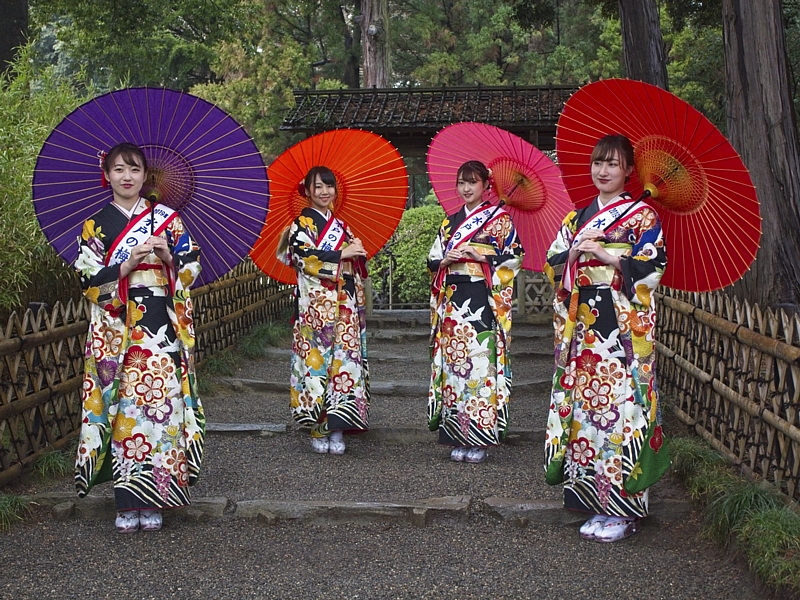
Kodokan Mito Han School
Founded by Nariaki Tokugawa, Kodokan was a school for young men from the age of 15 to develop their skills in literature, poetry, medicine, astronomy and more. There was no set graduation date so students could study for as long as they pleased. Originally a Mito clan school for young men to develop their skills in literature, poetry, sword fighting, riding and more. The building and the grounds boasts 800 plum trees of 60 varieties, as well as cherry trees and maple trees.
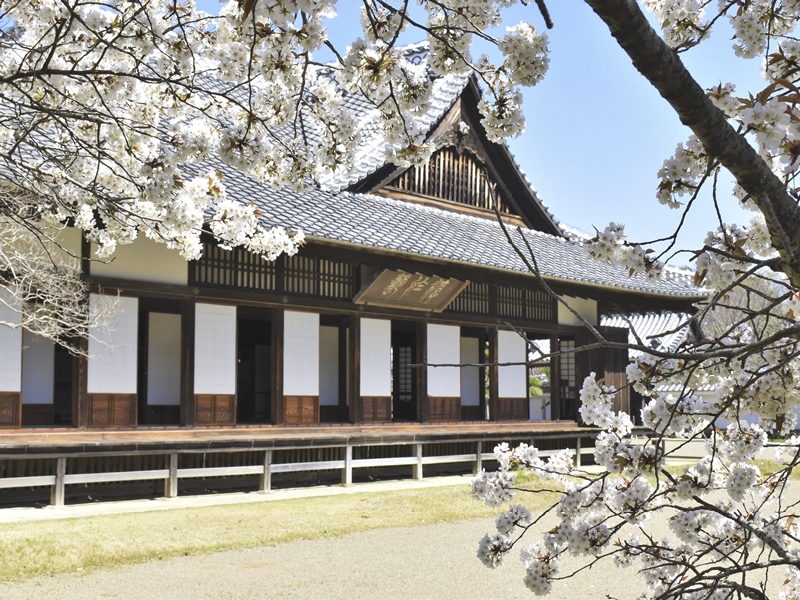
Courtesy of Ibaraki Prefectural Tourism & Local Products Association
Activity: Suzumo Chochin
Suzumo Chochin manufactures and sells beautiful, traditional lanterns — many with a modern twist. One of Suzumo Chochin’s mainstays is the local specialty — the suifu chochin — a style only found in the Mito area. The lanterns offer a warm glow and you can simply collapse them to make them flat, making them a practical and unique keepsake to take home. If you’re feeling crafty (and in a minimum group of four people), you can book a chochin-making workshop to piece together your very own lantern from scratch for just ¥3,000 per person. Simply pop an email to Suzumo Chochin in simple English to confirm availability.
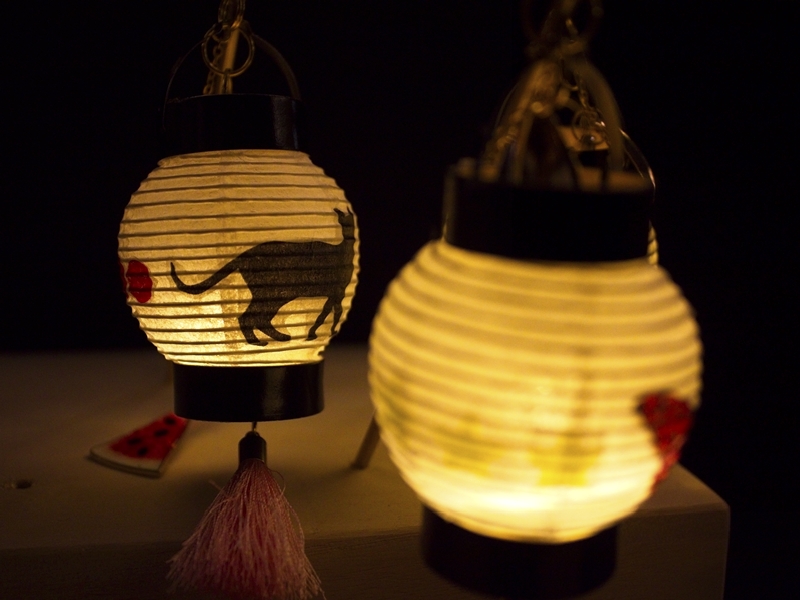
Visit: Art Tower Mito
Centrally located in Mito City, Art Tower Mito is more than its name implies. It’s a culture and arts complex with a concert hall, theater and a contemporary art gallery. It also has an open area with a beautiful water feature and is often used for flea markets. Head up the 100-meter tower for panoramic views of the city and beyond, or enjoy it from below at night when it is illuminated in bright colors.
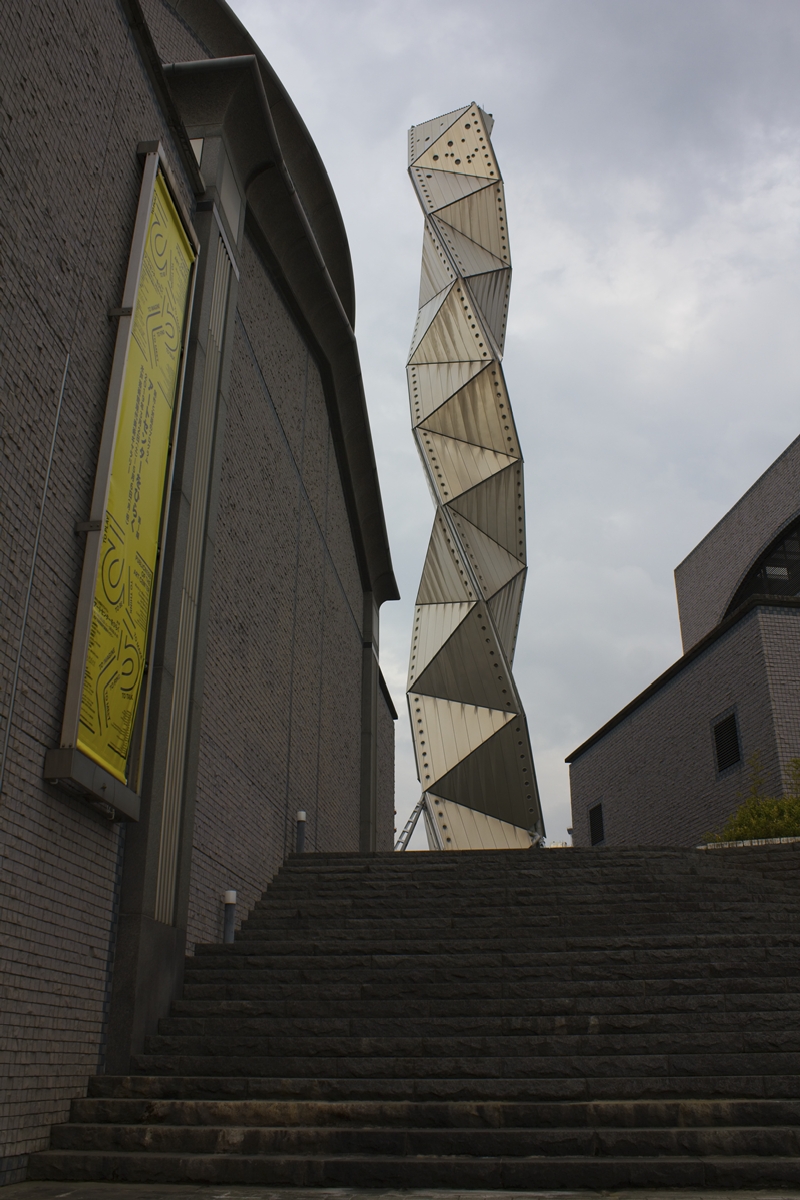
Know: Nunoe Artist Sueko Minakawa
Renowned Ibaraki-born artist Sueko Minawaka works with a unique material: vintage kimono, especially from the Edo period. She creates nunoe – cloth art – and constructs huge works scaling about 2 meters high and 1 meter wide, with every part a piece of fabric. Even fine details like the iris of an eye, or wrinkles on the skin are marked with fabric, not thread or pen. Her most recent collection features beautiful young women in kimono in dynamic poses. Each piece tells a story of something Minakawa has either experienced or dreamt. While she doesn’t exhibit regularly, after many world tours she has decided to mostly only do so in Ibaraki in future.
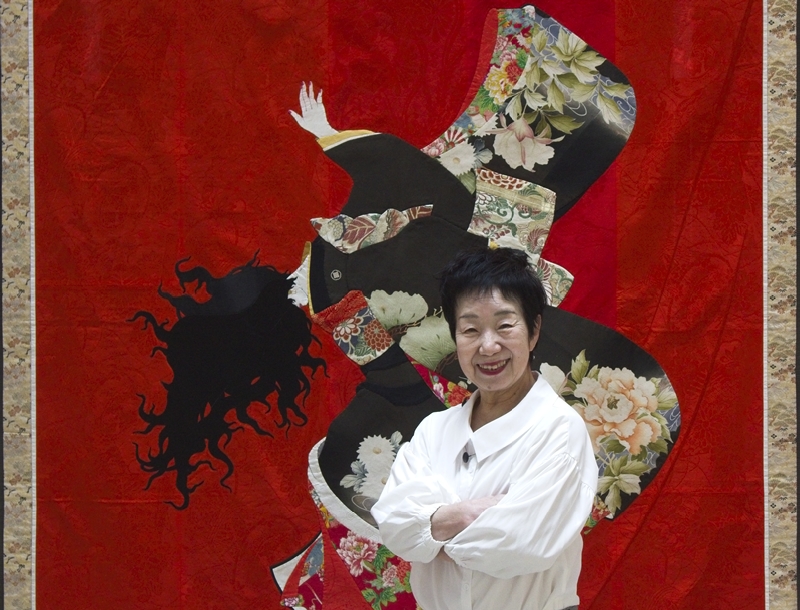
Visit: Museum of Sake and Umeshu Besshunkan
Besshunkan serves as both a history museum of sake-making and a store selling Meiri Shurui, Co. Ltd’s impressive variety of spirits. From award-winning umeshu (plum wine) to beautifully designed gin and sake, there’s something for even the most particular sake aficionados. Especially recommended is the Meiri Hyakunen (100-year) Umeshu, which features a five-year cherrywood-aged brandy and has won multiple awards for its full-bodied flavor.
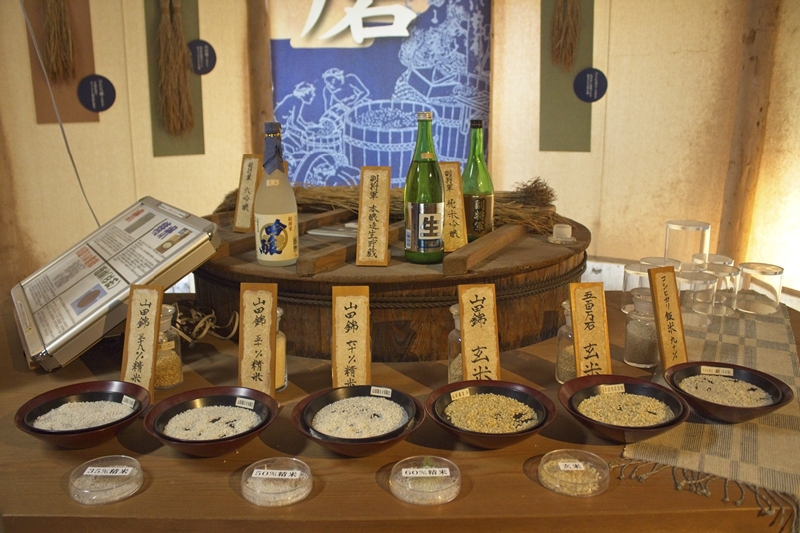
Activity: Tatami Making Workshop
Tatami is a flooring type unique to Japan and that has shaped indoor culture and interior design for centuries. Though much of the process has become automated, there is still a lot of skill needed to make tatami. At Sekikawa Tatami Shouten Co., Ltd, a company founded almost 100 years ago, you can take a guided tour around the onsite factory at their Mito Showroom location to see exactly what’s under your feet in a traditional Japanese home. You can also make your own mini tatami mat to decorate your home with. Have fun mixing and matching mat colors and tatami-beri (the fabric that lines the edge) patterns. The tatami-making experience only takes 30 minutes and is a great souvenir to take home. Both the tour and the tatami experience should be booked in advance. This can be done easily via email in simple English.
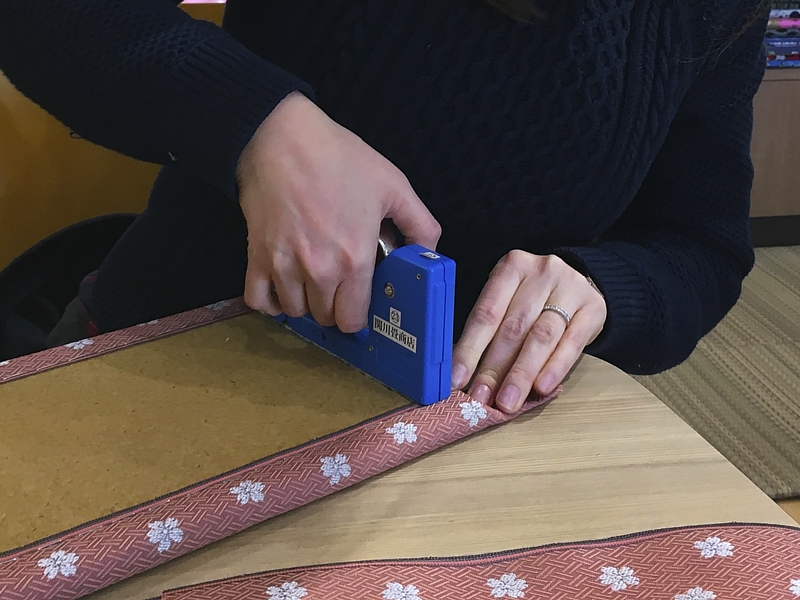
Dine and Stay: Mito Plaza Hotel
As with many regions in Japan, Ibaraki also has its own wagyu beef brand: Hitachi Beef. Enjoy it best at one of Mito’s most prestigious hotels, Mito Plaza Hotel. Dinner options include a teppanyaki course with a private chef preparing the beef and a range of sides while you wait. It’s a luxurious experience only rivaled by a stay at this Meiji-inspired hotel that boasts the ultimate in Japanese hospitality.
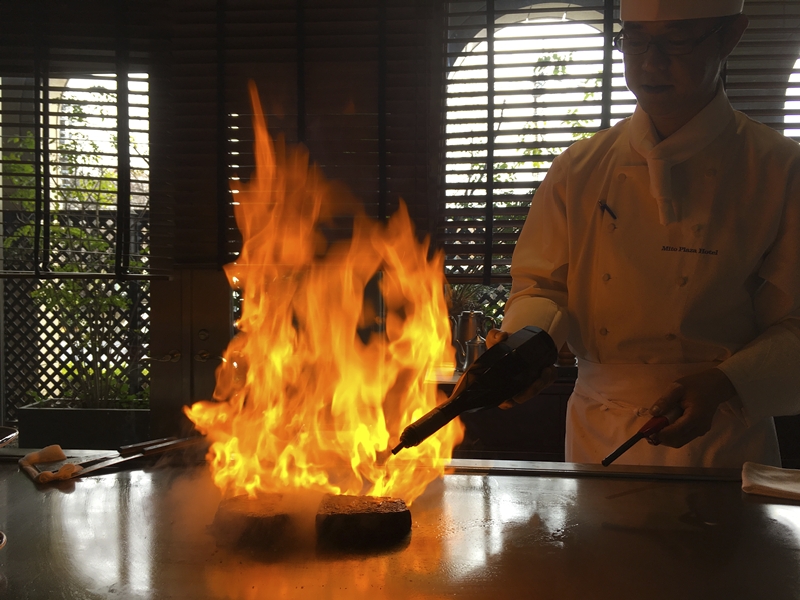
Stay: Daiwa Roynet Hotels Mito
For those on a budget, Daiwa Roynet Hotels Mito is a stylish chain hotel conveniently close to Mito Station and the many shops and restaurants that surround it. While the hotel doesn’t have its own breakfast room, guests can choose between breakfast at the coffee shop Tully’s or a buffet at an izakaya in the same building.
Kasama
Kasama flourished as a center of ceramics in the Edo and Meiji periods and this tradition lives on today.
Visit: Kasama Inari Shrine
One of Japan’s three great Inari shrines (together with Fushimi Inari in Kyoto and Toyokawa Inari in Aichi Prefecture), Kasama Inari Shrine has a long history as a place of spiritual importance in the area. It was frequented by lords and dignitaries of the Kasama Domain during the Edo period and is still an important pilgrimage spot today, boasting over 3 million visitors a year. Visit in May when the shrine’s 400-year-old wisteria is in bloom, or in late October to early November during the chrysanthemum festival.
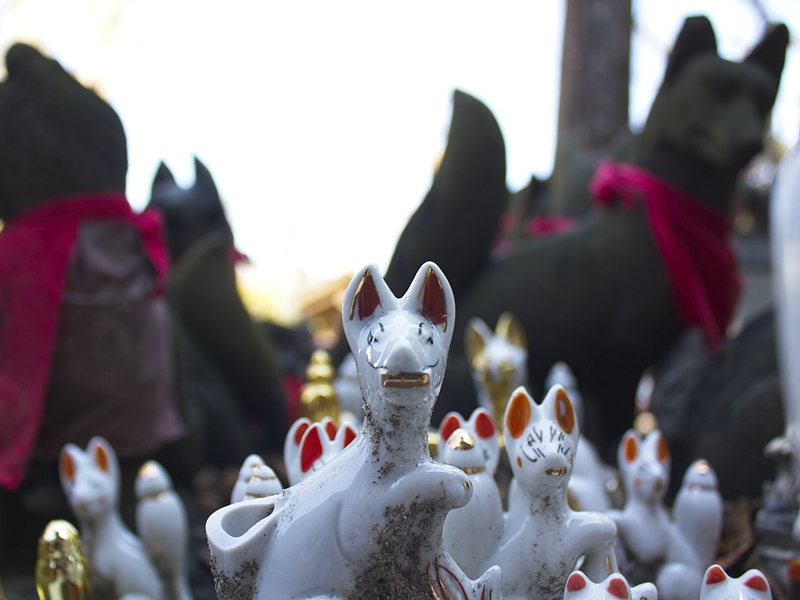
Dine: Kimuraya
Almost right across from Kashima Inari Shrine, this local eatery is most well-known for its variety of inarizushi fillings. While the traditional inarizushi consists of vinegared rice wrapped in seasoned inari-age – a tofu pocket – Kimuraya has fillings you couldn’t even imagine. From a soba filling to walnuts and rice, salmon flakes and minced meat, to pickled plum and seaweed, every inari is a flavor sensation. If you have a sweet tooth, drop by the owner’s son’s patisserie Fuku just a couple of blocks away for some cream puffs.
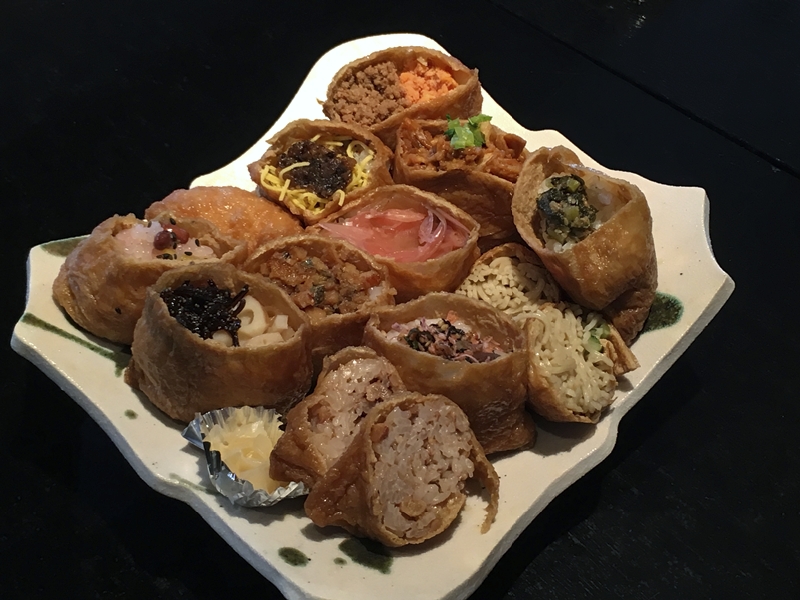
Visit: Kasama Craft Hills and Ibaraki Ceramic Art Museum
For some open space and outdoor art, head to Kasama Geijustsu no Mori Park. This expansive area with rolling hills, opens fields and art hidden away in the forest is a popular spot for locals to lounge around and enjoy a lazy afternoon. It’s also home to Kasama Craft Hills, a complex that sells ceramics from local artists and offers classes for those who want to make their own. You’ll also find Ibaraki Ceramic Art Museum, which features some of the most innovative up-and-coming ceramic artists, as well as groundbreaking masters of the past. It’s the perfect place to while away a few hours, or even the whole day.
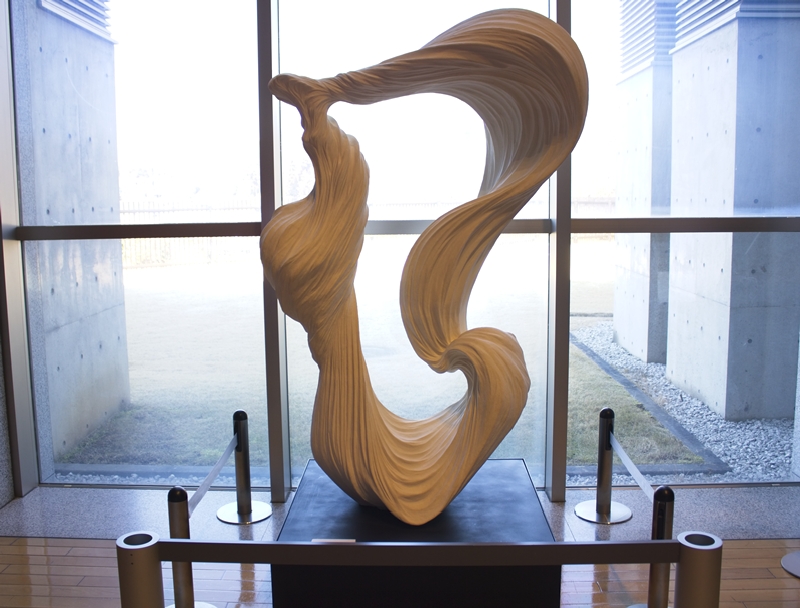
Oarai
This city on Ibaraki’s east coast is one of the best places to catch a sunrise over the Pacific Ocean.
Dine & Stay: Oarai Hotel
This luxurious resort hotel boasts an unrivaled view of the ocean, as well as spectacular meals. The communal bathhouse on the 9th floor looks over the ocean, but there are also rooms with private baths with the same view. The hotel offers an impressive gourmet selection, but of course, the ankou nabe (monkfish hot pot) is one of the winter season mainstays. A stay here isn’t complete without a stunning ocean sunrise. For the best view, head out just a couple of hundred meters down the beach to the Kamiiso-no-Torii, or the Gate of the Seashore God. This beautiful structure stands on craggy rocks in the sea, and watching the waves crash against it as the sun rises in the distance behind it is almost a spiritual experience. Be warned — photographers eager for the best shots (and time lapses) of the scene will be in place early, up to an hour before the sun rises.
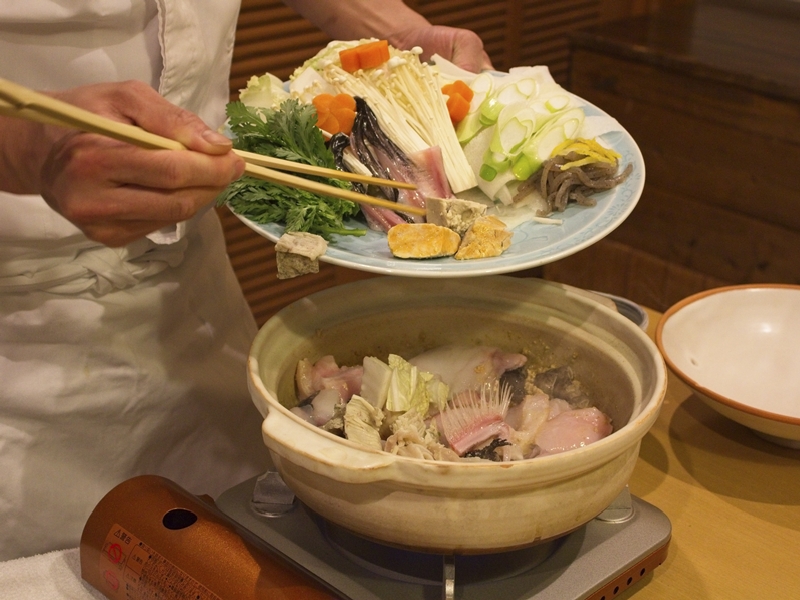
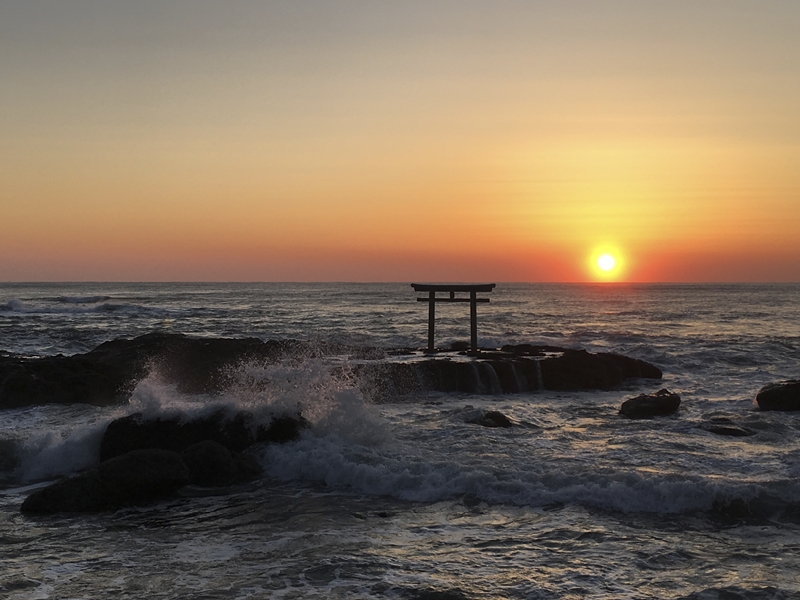
Oarai Isosaki Shrine
The previously mentioned torii belongs to Oarai Isosaki Shrine, which is also worth a visit for its unique architecture and unlikely anime connection. The shrine dates back to 856 and though destroyed once, it was rebuilt by Mitsukuni Tokugawa in 1690. Mitsukuni was known for his unique outlook on life, which is reflected in some of the shrine’s architecture. Look up at the main entrance — instead of the usual obviously displayed dragons and other mythology creatures, the beasts are made up of waves, inspired by the ocean facing the shrine. Oarai Isosaki Shrine is also a pilgrimage spot for anime lovers. It’s featured in the anime series Girls und Panzer, a story about battle tank driving high school girls, along with other areas in Oarai City. Take a close look at the ema (votive boards) as many fans draw their own designs — many are extremely detailed.
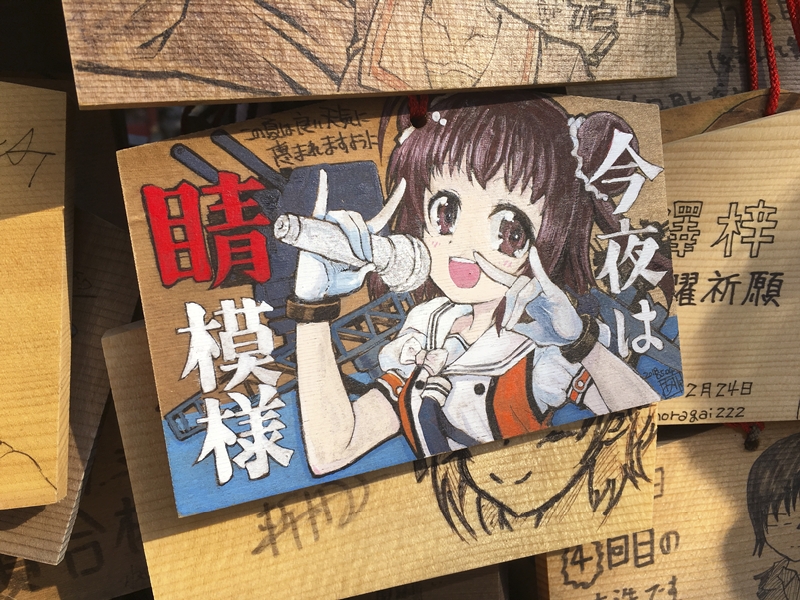
Hitachi-naka
Just north of Oarai, Hitachi-naka is home to one of Ibaraki’s most famous sightseeing spots: Hitachi Seaside Park.
Visit: Hitachi Seaside Park
Chosen as one of Japan’s 31 most beautiful places, Hitachi Seaside Park has gained worldwide fame for its amazing year-round flower displays. It’s also home to Rock in Japan Festival, a music festival held every summer featuring many of Japan’s best artists. Some of the park’s most famous sights are the delicate blue nemophila flowers in spring and the bright red kochia bushes in fall.
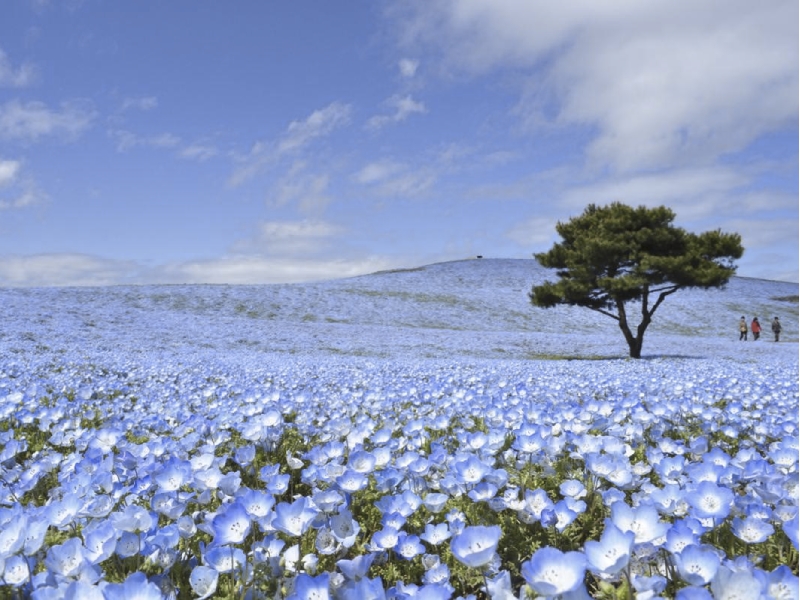
Courtesy of Ibaraki Prefectural Tourism & Local Products Association
WEST IBARAKI
Yuki City
Yuki is home to the UNESCO Cultural Intangible Heritage Yuki Tsumugi, a unique hand-woven silk with a history dating back over 2,000 years.
Activity: Tsumugi no Yakata
At Tsumugi no Yakata you can discover the history behind yuki tsumugi silk and the intense work and time required to make one kimono. One building in the complex contains rows and rows of looms where you can watch the weaving in action — or even make your own tsumugi silk coaster. The experience only takes 30 minutes and makes a great souvenir to take home. You can also, if booked in advance, rent genuine tsumugi silk kimono to wear while walking around in the old historic area of the city. It’s perfect for photos and the only way to truly understand the luxury of this beautiful silk. Tsumugi no Yakata also has a small shop selling silk accessories — well worth a look while here. To make a reservation for either of the experiences, send an email in simple English to tumuginoyakata at okujun.co.
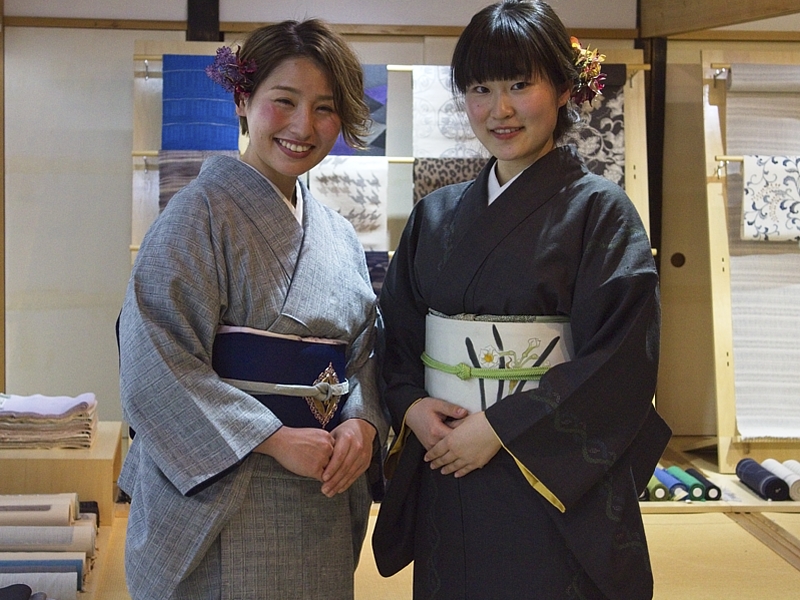
EAST IBARAKI
Technically on the southeast, eastern Ibaraki is a narrow strip of land bordering the Pacific Ocean to the east and Lake Kasumigaura to the west.
Kashima
Soccer fans will recognize this city name, as it’s the home of J-league team Kashima Antlers. It’s also where Kashima Jingu, one of the oldest shrines in eastern Japan, resides.
Visit: Kashima Jingu
Reported to be originally founded in 660 BC, when Japan’s first emperor, Emperor Jimmu, took to the throne, Kashima Jingu is teeming with historical and spiritual significance. Most of the buildings hail from the Edo period, as the Tokugawa clan shoguns prayed to the enshrined war diety Takemikazuchi no Onokami here. The expansive grounds house not only multiple shrine buildings but also a couple of dozen deer, which are believed to be the messengers of the gods. The deer in Nara originally hailed from Kashima Jingu — they were gifted hundreds of years ago. Continue exploring to find Mitarashi Pond, a spiritually charged waterhole, and the cornerstone, which is said to keep Kashima safe from earthquakes.
As of writing, the Treasure Museum, which houses a 2.7-meter long sword forged in the 8th century, is currently closed due to renovations.
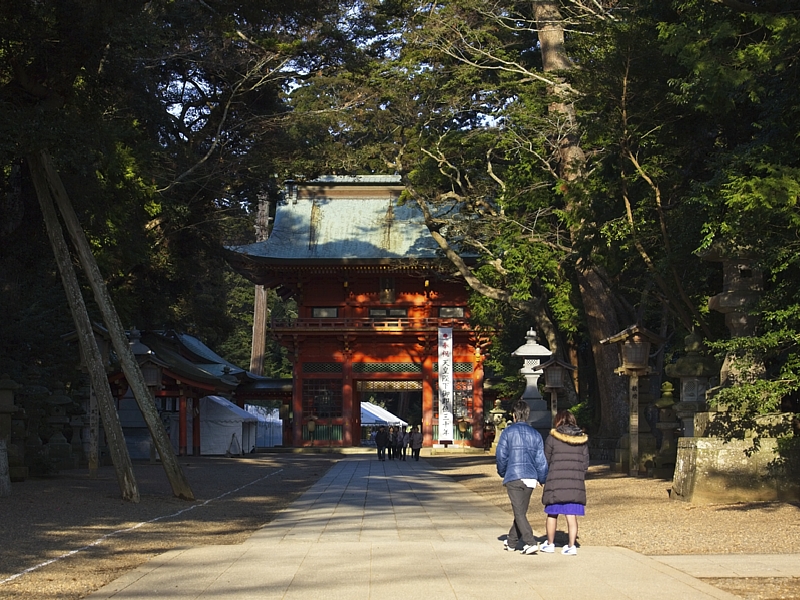
Namegata
Northwest of Kashima, Namegata is abundant in nature and agriculture.
Namegata Farmers Village
This facility opened in 2015. Formerly an elementary school, Namegata Farmers Village is a stylish family-friendly destination that has it all. Its dining establishments offer farm to table-style food, with most ingredient grown locally in Ibaraki. The Yakiimo Factory Museum, dedicated to the humble sweet potato, has fun interactive exhibits — kids will love the “musical butts” — and tons of information on how we get our food. For those wanting to stay longer, there are top-notch barbeque facilities and visitors can go glamping just for the day or overnight.
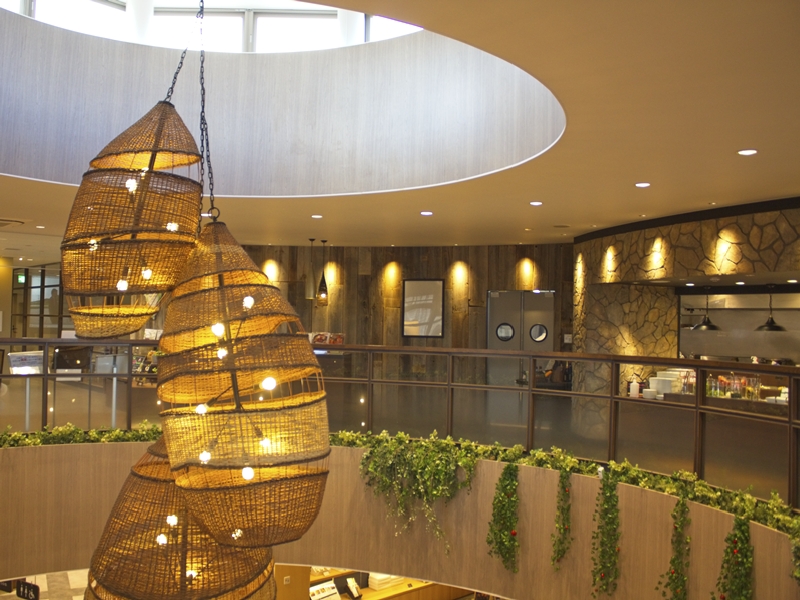
SOUTH IBARAKI
Ishioka
Most known for the Ishioka no Omatsuri festival held annually in September, Ishioka is a charming city with a rich history.
Drink: Shiragiku Sake
Shiragiku Sake has its base in Ishioka City and has been in business for over 200 years. The brewery uses water from under Mount Tsukuba, a particularly clean source that adds to the umami of its products. Now under the guiding hand of the 8th generation owner, the Shiragiku brand continues to innovate and improve its craft. Try the Umeshu Hachidai, a set of two plum wines that use ao-ume and tsuyu-akane plums respectively. It’s made in collaboration with another 8th generation owner — Mori Oyama of Yoshida-ya, a traditional pickled plum store and café in Oarai.
Tsukuba
You can get to the university and science hub of Tsukuba in the blink of an eye straight from Asakusa.
Visit: JAXA Tsukuba Space Center (TKSC)
When in Tsukuba, you can’t miss a visit to Japan’s largest aerospace facility, Tsukuba Space Center (TKSC). Visitors are welcome to stop by and explore part of the complex. Check out a full-scale model of the Hayabusa2, find out the latest satellites to be launched and which are heading into space in the future, and more. Book a guided tour in advance for an in-depth look at the place, including a visit to the KIBO flight control room and the Astronaut Training Facility. Guided tours are available in English, but make sure to book early, as there are few English-speaking guides.
Note: You will be asked to show your passport if attending a pre-booked guided tour
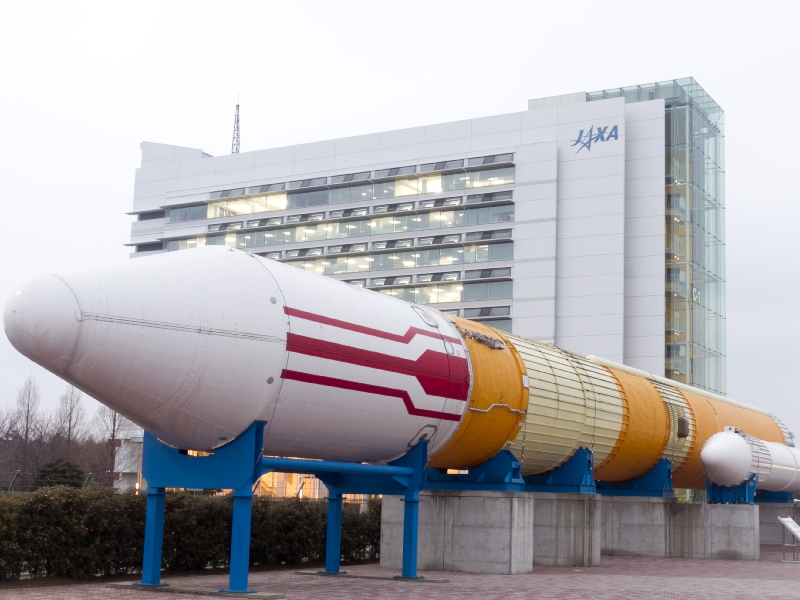
Courtesy of Ibaraki Prefectural Tourism & Local Products Association
Stay: Okura Frontier Hotel Tsukuba
Located in the heart of Tsukuba City, Okura Frontier Hotel Tsukuba is the perfect place to stay while exploring the area. It has a great central location and many staff members speak English fluently. The hotel prides itself on offering the highest quality service and facilities, including a 25-meter long pool and excellent dining options.
Ushiku
Ushiku lies just a short drive southeast of Tsukuba and is home to the tallest standing bronze Buddha statue in the world.
Visit: Ushiku Daibutsu
The Ushiku Daibutsu is hard to miss — it stands at 100 meters high (120 meters including the pedestal) and has no tall buildings nearby to rival its greatness. Constructed in 1993, it’s not only a place of spiritual importance, but it’s also a feat of human design and engineering. The index finger on the giant Buddha’s hand measures 7 meters long, while a big toe stands at 160cm tall. The statue is surrounded by beautiful flower gardens that come alive in spring, summer and fall, and tucked away behind it is a small animal petting area. Pay a little extra to go inside. Here you can learn how the statue was built, as well as grab a view of Mount Fuji and Tokyo Skytree in the distance. To commemorate your visit, buy a sheet of gold leaf to attach to the statue’s lower end.
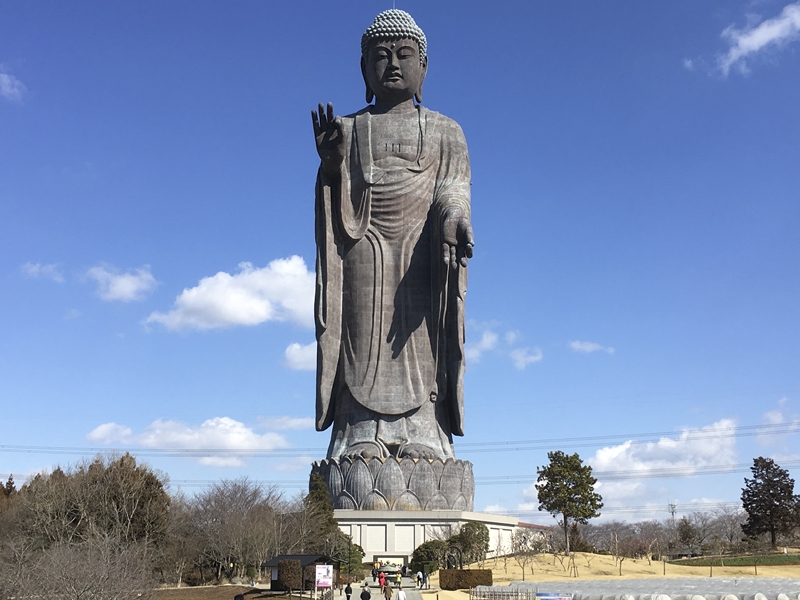
Dine: Ryugasaki City
Lying about 20 kilometers south of Tsukuba, Ryugasaki has an unusual claim to fame — croquettes. To battle an aging population and make the city more appealing to visitors, locals gathered together almost 20 years ago to come up with some seriously tasty treats. Headed by Kyoko Yoshida, what started as just an idea has now resulted in over 20 shops in the city serving a variety of croquettes — from tomato flavored to apple — to visitors from all over Japan. It’s a great way to explore small-town Japan, while enjoying a snack — simply buy a croquette from one shop and eat it while you wander to the next. (There’s a handy Ryugasaki croquette map to help you.) Since the croquette boom was created and is run by locals, it’s also a unique opportunity to chat with people from the area about the city and their lives.
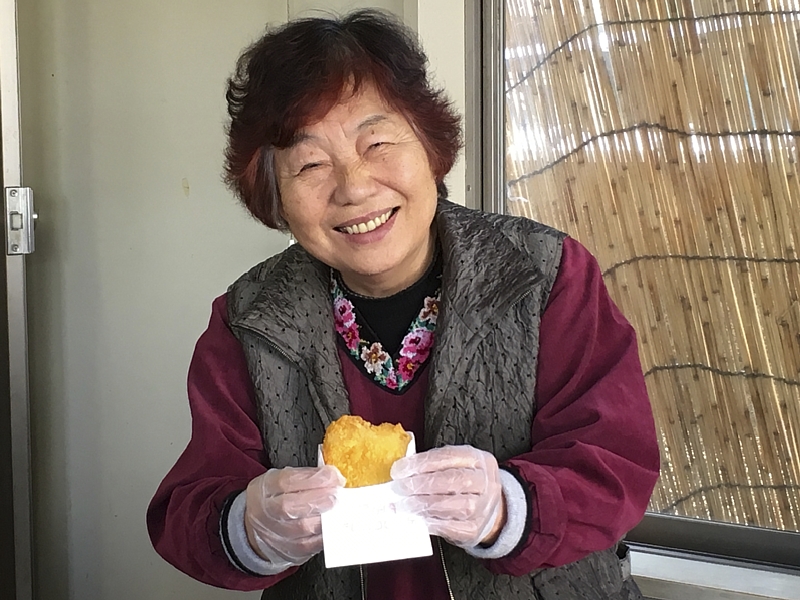
With so much to explore, this is only a quick overview of some of Ibaraki Prefecture’s amazing destinations. Which one are you going to explore first?
Updated On December 26, 2022

